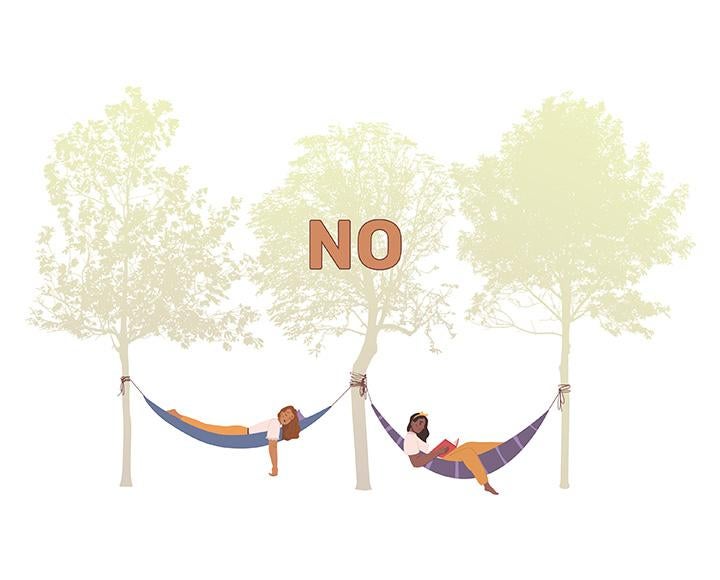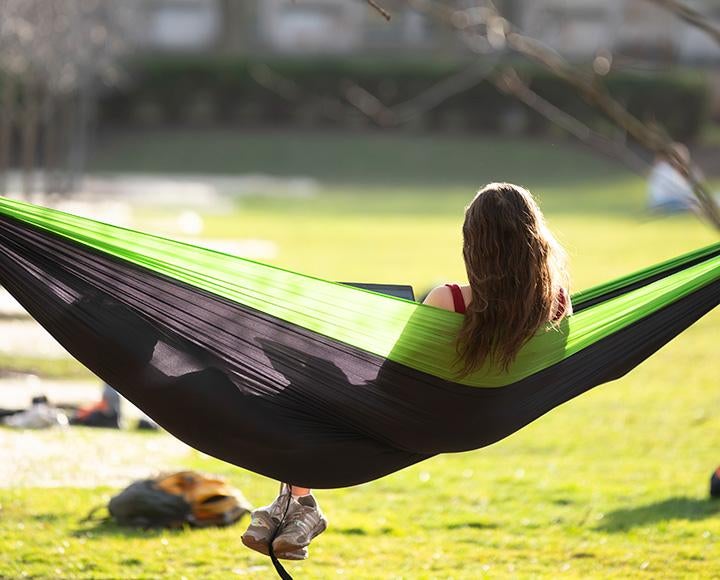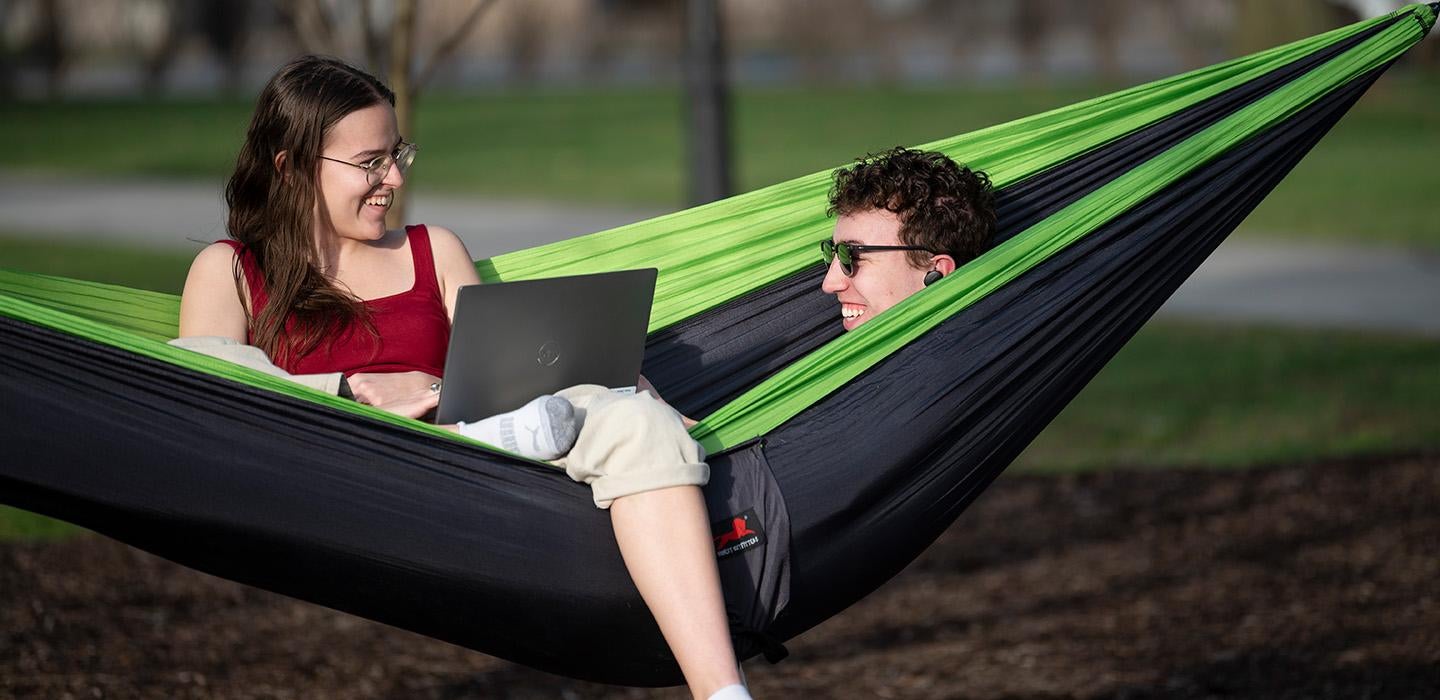
Subscribe to Pittwire Today
Get the most interesting and important stories from the University of Pittsburgh.The University’s Pittsburgh campus is home to almost 4,000 trees, which provide myriad benefits, including shelter for migrating birds and pollinators, improved air quality and prime locations for hammock lounging.
But where and how you choose to hang your hammock impacts tree health. Pittwire spoke with Assistant Director of Sustainability Sam Chan about her tips for how to enjoy hammock time without putting undue stress on trees.
Look up
Before hanging a hammock, always scan a tree’s canopy to detect any dead branches or leaf die-off. Not only can falling limbs lead to injury, but a perishing canopy indicates a tree is unwell and should not be subjected to the additional strain of supporting a hammock.
Learn the ropes
A tree’s bark is its first layer of protection against pests and diseases, so rather than rope, which can strip the trunk of its coating, be sure to use tree-saver nylon straps one inch or wider made especially for hammocks.
Diameter matters
Look to your legs to identify tree trunks sturdy enough to support your weight. An optimal hammock tree should have a diameter 12 inches or wider, and while that may sound difficult to estimate, choosing one with a trunk slightly larger than the thickest part of your thigh is a sure bet.
Branches are for birds
Tree limbs are far too delicate to support the weight of a hammock — stick to trunks.




One hammock per tree, always
No matter the size or age of a tree, it is never okay to hang more than one hammock off a tree trunk. That means no stacking hammocks up trees like rungs on a ladder, and never attach more than one strap to a tree at a time. This behavior is potentially the most damaging to the health of a tree.
Know your angles
Straps should be the same length on each side of the hammock to ensure an even distribution of weight to each tree. There should be a 30-degree angle between your strap and the ground, and your hammock bottom should be about 18 inches off the ground.
Become even more tree savvy
The Office of Sustainability is recruiting its next cohort of volunteer tree tenders to help maintain street trees in the Oakland neighborhood.
Register for a tree tender training sponsored by Pitt and led by environmental nonprofit Tree Pittsburgh on May 30. This free, in-person course is open to all Pitt faculty, staff and students and covers urban forestry practices, tree biology and health, basic tree identification, proper pruning and maintenance and how to lead your community in organizing tree plantings and care.


